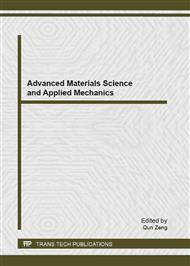p.74
p.79
p.88
p.94
p.100
p.105
p.111
p.115
p.119
TiO2 and Metal-Doped TiO2 Performance for the 4-Chlorophenol Degradation in Batch and Continuous Reactors
Abstract:
Photocatalytic degradation of 4-chlorophenol (4-CP) was investigated with a series of TiO2 and TiO2 doped with Ag and Au. Experiments were carried out in both batch and continuous reactors under an 11 W low pressure mercury lamp. Total organic carbon (TOC) was used as an indicator in addition to the concentration of 4-CP for the effectiveness of the degradation. In the batch reactor, a catalyst was suspended in aqueous 4-CP solution. Interestingly, 4-CP degradation did not depend on the catalyst used compared to photolysis. On the contrary, the presence of any of the catalyst significantly affected the intermediates, hydroquinone and hydroxyhydroquinone, degradation. Degussa P25 showed higher catalytic activity than the synthesized TiO2 and in some cases TiO2 doped with a precious metal in terms of TOC degradation. The addition of the precious metal to TiO2 did not improve the 4-CP degradation but it did on the degradation of the intermediate products. Degussa P25 was dip-coated on stainless steel mesh and used in the continuous reactor. With the continuous reactor, experimental conditions could be set so that complete degradation could be achieved.
Info:
Periodical:
Pages:
100-104
Citation:
Online since:
May 2013
Keywords:
Price:
Сopyright:
© 2013 Trans Tech Publications Ltd. All Rights Reserved
Share:
Citation:


